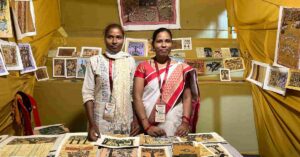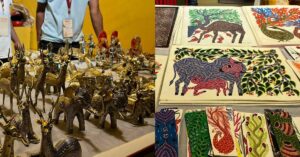These Stunning Photos Document the World’s Most Unique Tribes, From Ladakh to the Amazon
In his pics, photographer Trupal Pandya has captured the most unique tribes of the world, including the Brokpas of Ladakh, also known as the last of the Aryans.

Any traveller exploring the Ladakh highlands is bound to come across a set of people with distinguished attire — berry flower headdresses, heavy metal jewellery and sheep skin capes. These sightings are rare but not uncommon. And in 2016, whilst on a project in the Himalayas, photographer Trupal Pandya (35) from Gujarat had his first tryst with the Brokpa tribe.
A keen interest in capturing ethnic communities across India and the world defines Pandya’s photographic prowess. Explaining this unique draw, he says, it is because of a dynamic equilibrium that these tribes have with their environment. “A peace of mind in the felt experience of the moment,” he adds, quoting American mystic, Terence McKenna.
Pandya was intent on photographing the Brokpa tribe that had maintained a recluse’s life for the major part of the century. With as few as 2,000 current members, the tribe is spread across the villages of Dha, Gharkun, Dharchiks and Hanu.
Mingling with society has always been a major source of contention for them. But, it seems the Kargil War of 1999 changed things. It was during this time that the tribe members began farming, trading and more, even lugging rations, ammunition, etc for the army.
As a member of the Brokpa tribe Tsering Dorje recounted in an article to the Deccan Herald, “Even our women carried loads. We had sore backs. In fact, some of them even died doing so.”
For a tribe that has managed to keep much of their identity under wraps, it is a revelation to know of the many customs, cultures and lores that bind them.
But, Pandya shares, what really drew him to capture them was the joy and abundance they exuded. While today, much more information is available on the tribe, their origins are still disputed.
“One theory according to Brokpa folklore is that hundreds of years ago, three brothers, Galo, Melo, and Dulo, escaped in search of a new land to settle down,” shares Pandya. “The belief is that when these three brothers arrived in Ladakh, they emptied their shoes filled with husk which multiplied into a good crop. These brothers, considered Aryans, settled there, and their descendants are called the Brokpa,” Pandya explains.
The Aryan theory is also backed by the community’s features — tall stature, green eyes and high cheekbones.
But, another more popular theory suggests that this tribe was formed by the descendants of Alexander the Great’s ‘Lost Army’ who stayed back in the region long after the conqueror left in 326 BC.
An insight into the coveted tribe
The Brokpa tribe has displayed a strong intent on guarding their cultural and social beliefs from ‘contamination’. The ‘last of the Aryan supreme race’ stays away from kinship and marriage outside the community to preserve this ancestry. But this close-knit bond also means a sense of brotherhood between members of the tribe.
Pandya recalls admiring the love the tribe harbours for nature. “Their deep connection to the land is evident in the way they decorate themselves so beautifully with nature’s gifts – flowers, bright colours, and an aesthetic deeply related to the earth.”
Pandya who has captured tribes across the world through his lens like the tribes in Guatemala, South Sudan, the Huaorani people of the Amazon and more, finds a common link that binds them – profound stories.
“I was working with a National Geographic photographer Steve McCurry in 2012, and my first assignment from him was to handle the processing and cataloguing of the proofs from his most recent trip to the Omo Valley in Ethiopia,” he says recalling how his love for tribal subjects began.
“While processing the images, the intended impact took hold of me. I became deeply obsessed and fascinated by the people and the culture captured in those images, igniting a strong determination to see these communities firsthand.”
Here’s a glimpse into his series chronicling the life of the Brokpa community.
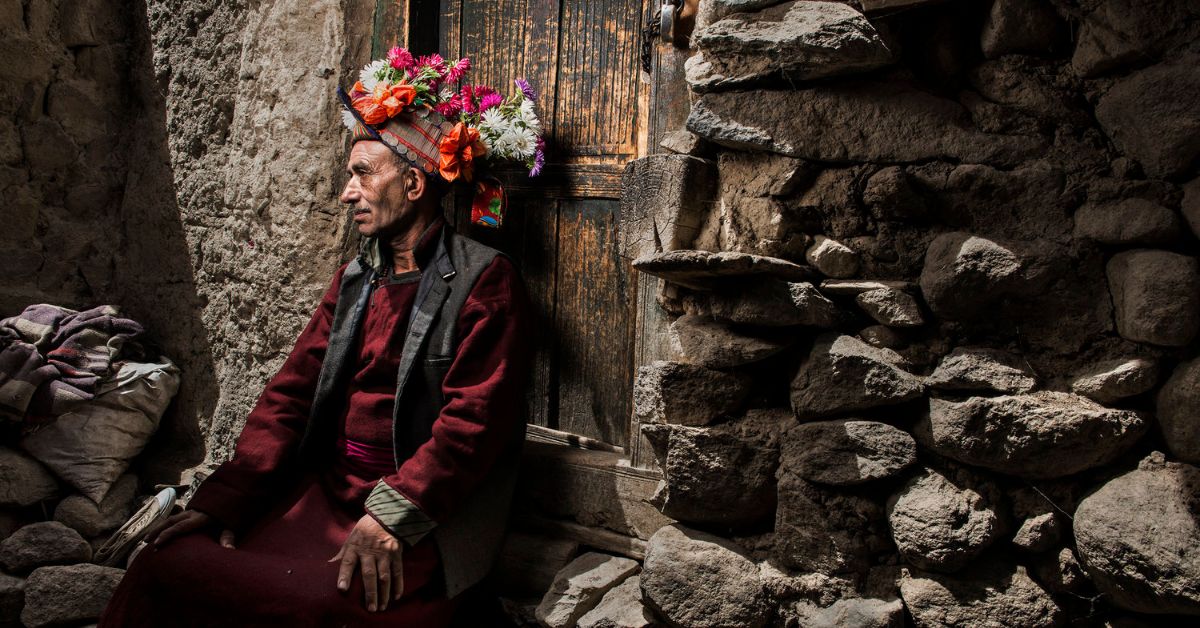
“About 130 km (80 miles) northeast of Kargil, on the Line of Control on the India-Pakistan border, where both countries fought the war in the summer of 1999, are the villages named Dha, Hanu, Darchik, and Garkon,” notes Pandya. “These villages are inhabited by a tribe that has lived in isolation for thousands of years; it’s the heartland of a tribe called the Brokpas or the Drokpas.”
He adds that one of the most striking cultural symbols of the Brokpa tribe is the headgear. “Embellished with ornate metal jewellery, coins, and exotic flowers, these headgears are worn to ward off evil. It is also believed that the flowers protect them from diseases.”

Living at high altitudes comes with its own set of challenges. And the tribe members ensure they are well protected from the chill. “Men and women are seen wearing coats lined with sheep fur,” says Pandya. He adds that the significance of the “elaborate headgear” called ‘Tepi’ is that it is believed to ward off evil and keep illnesses at bay.
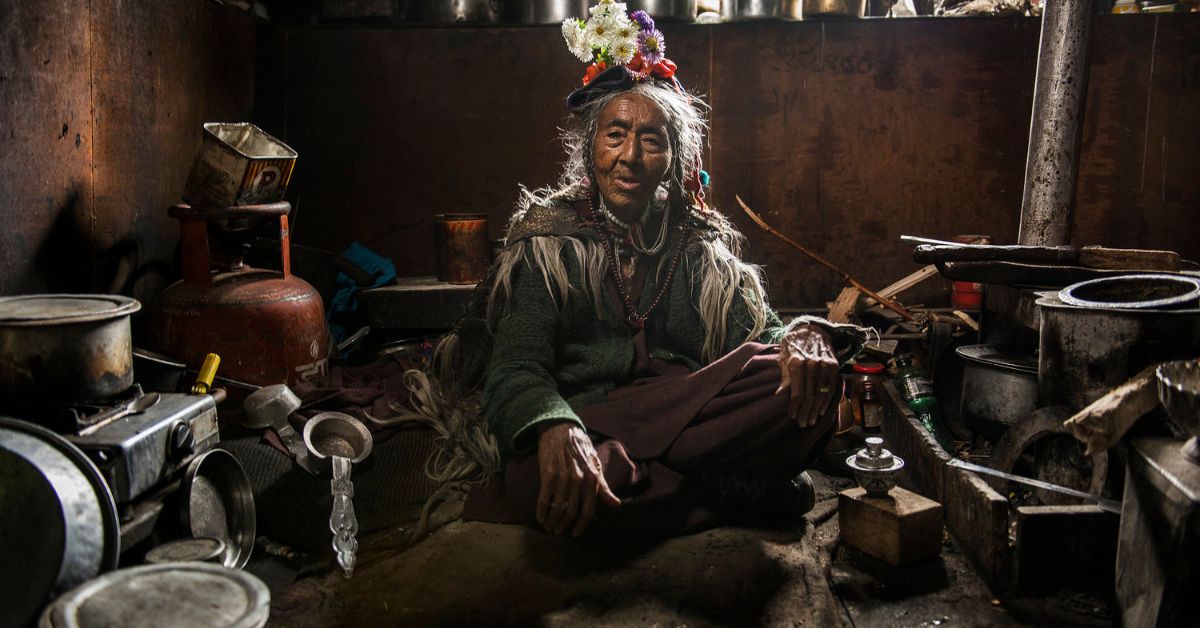
During his time capturing the series, Pandya would often observe the elderly Brokpa women chanting and praying at the side of a small dirt road in the village. “As I approached one of them and inquired about what she was praying for, she replied, ‘I am praying for a better afterlife.’” he recalls.
Pandya soon learnt that Brokpas practised Buddhism and believed in a cycle of death and rebirth called samsara. “Through karma and eventual enlightenment, they hope to escape samsara and achieve nirvana, an end to suffering. They also believe in the mystic Gods that they refer to in their folk songs and stories.”
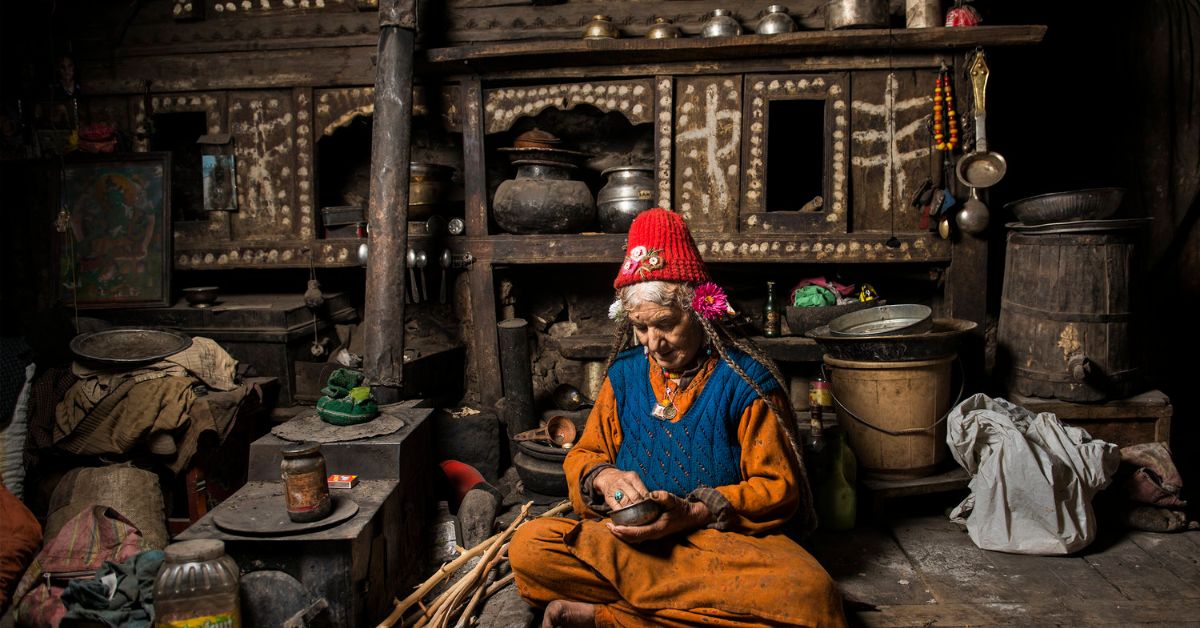
As winter sets in Ladakh, the community members move into the basement of the home which plays the role of a winter house. “This place is used to warm up and rest during the hostile winter months.”
Even whilst isolated from the rest of the world, Pandya was amazed at how the tribe found its own ways of adapting.
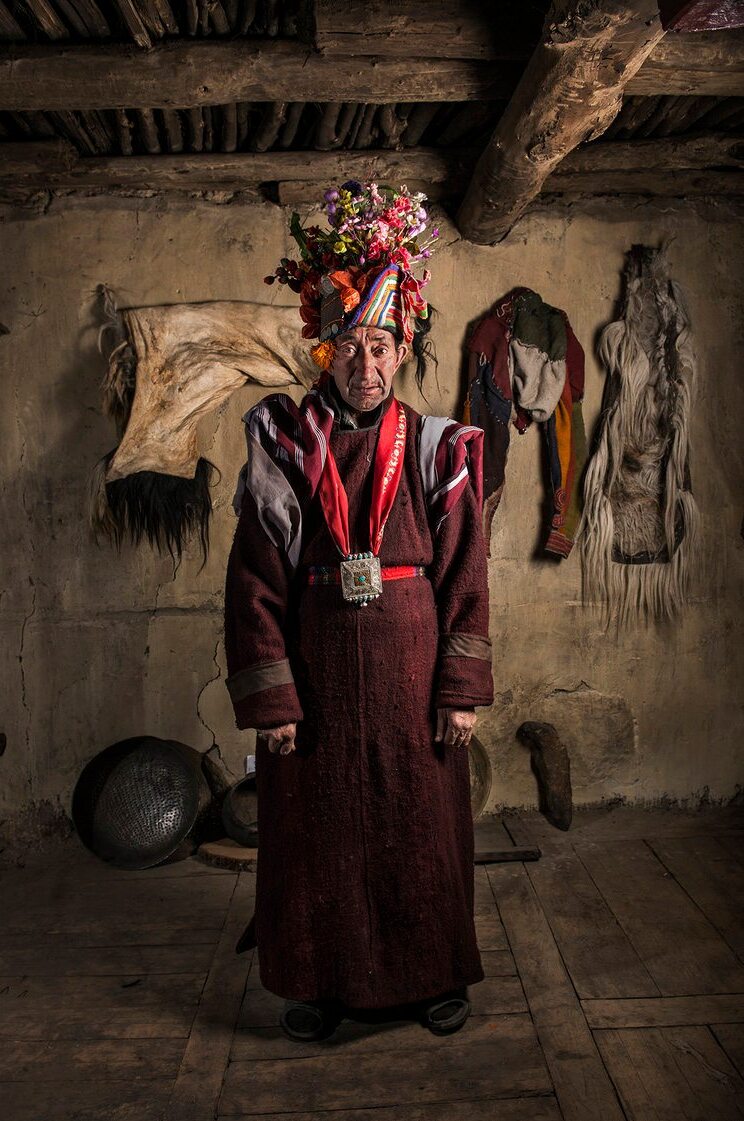
The ability to remain mysterious in a world where everything has become so accessible is unique. But while on his project, Pandya says that what the tribe lacks in written history they make up for in the form of songs sung down from many generations. “I visited one of the interesting Brokpa households where the basement has been converted into a museum to showcase important Brokpa artefacts. The Brokpa photographed here is a singer who believes in preserving their unique culture by singing and running the museum.”
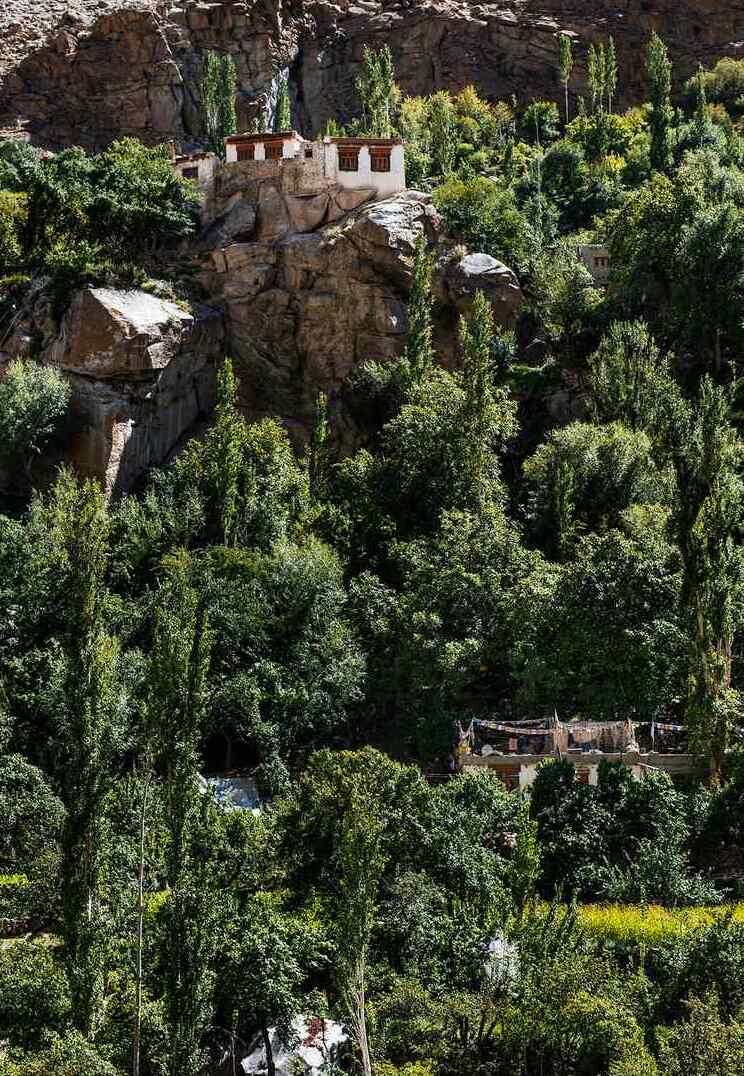
Following the Indo-Pak war in 1999, road connectivity increased between the outside world and the Brokpa villages. “The otherwise isolated tribe has now started adapting and opening up to the world,” shares Pandya, who also noted their amicable nature while speaking of their customs.
For Pandya, capturing this series on a tribe shrouded in mystery, was transformational. “My photography lets me intertwine both my creative hunger and my cultural curiosities.”
Here’s a look at the tribes across the world that Pandya has captured: If you found our stories insightful, informative, or even just enjoyable, we invite you to consider making a voluntary payment to support the work we do at The Better India. Your contribution helps us continue producing quality content that educates, inspires, and drives positive change. Choose one of the payment options below for your contribution- By paying for the stories you value, you directly contribute to sustaining our efforts focused on making a difference in the world. Together, let’s ensure that impactful stories continue to be told and shared, enriching lives and communities alike. Thank you for your support. Here are some frequently asked questions you might find helpful to know why you are contributing?


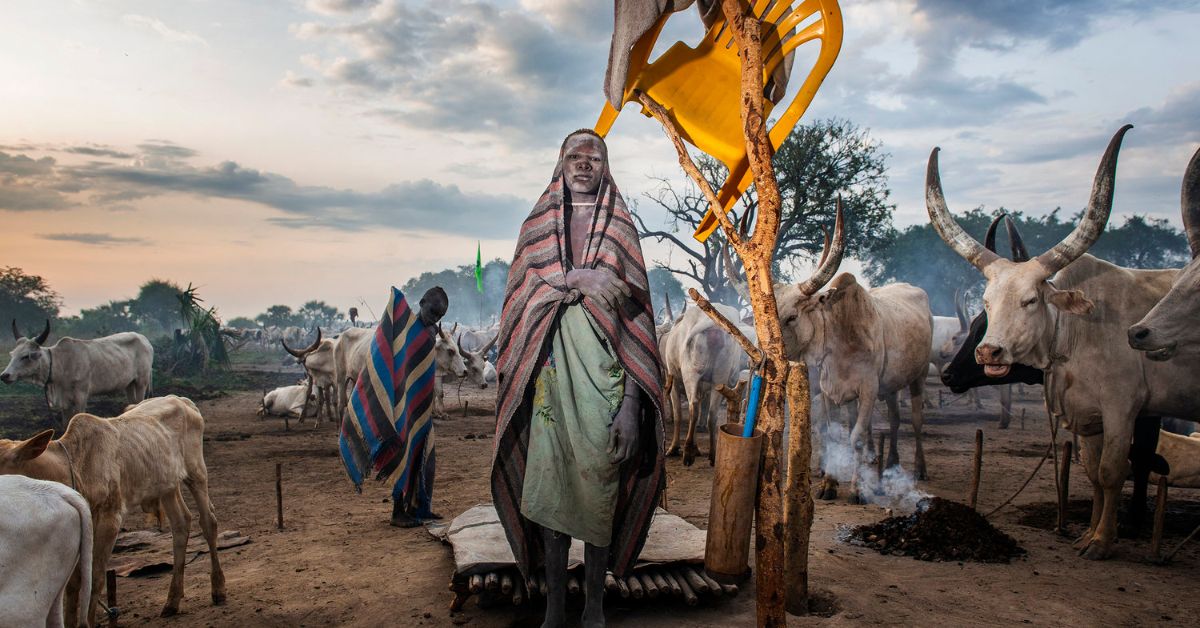
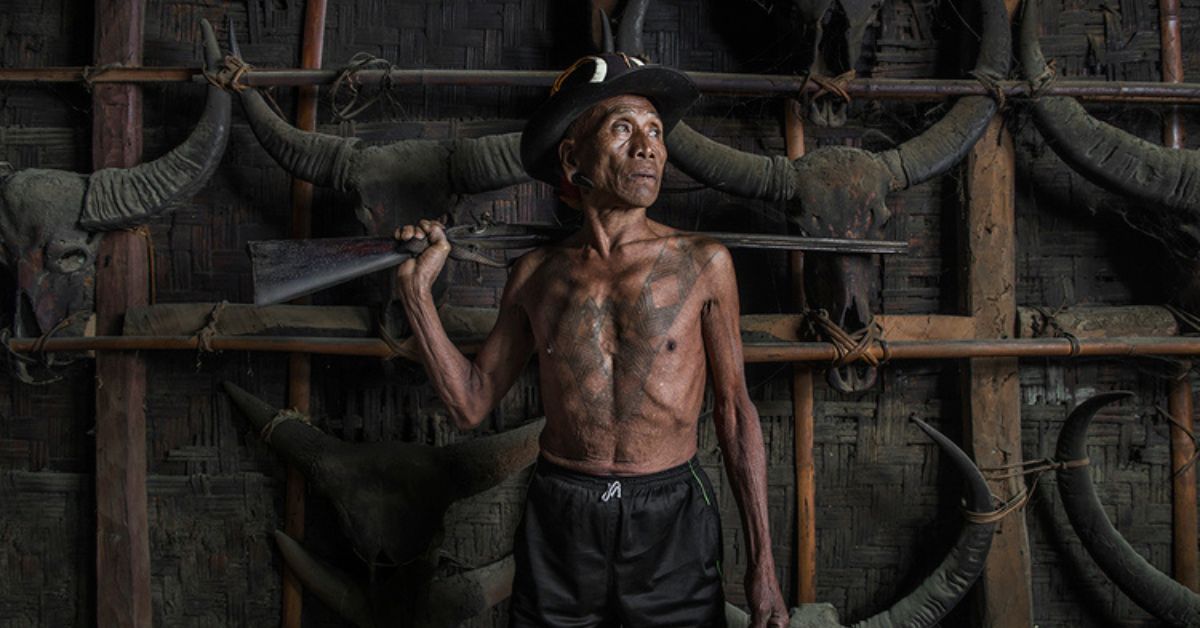
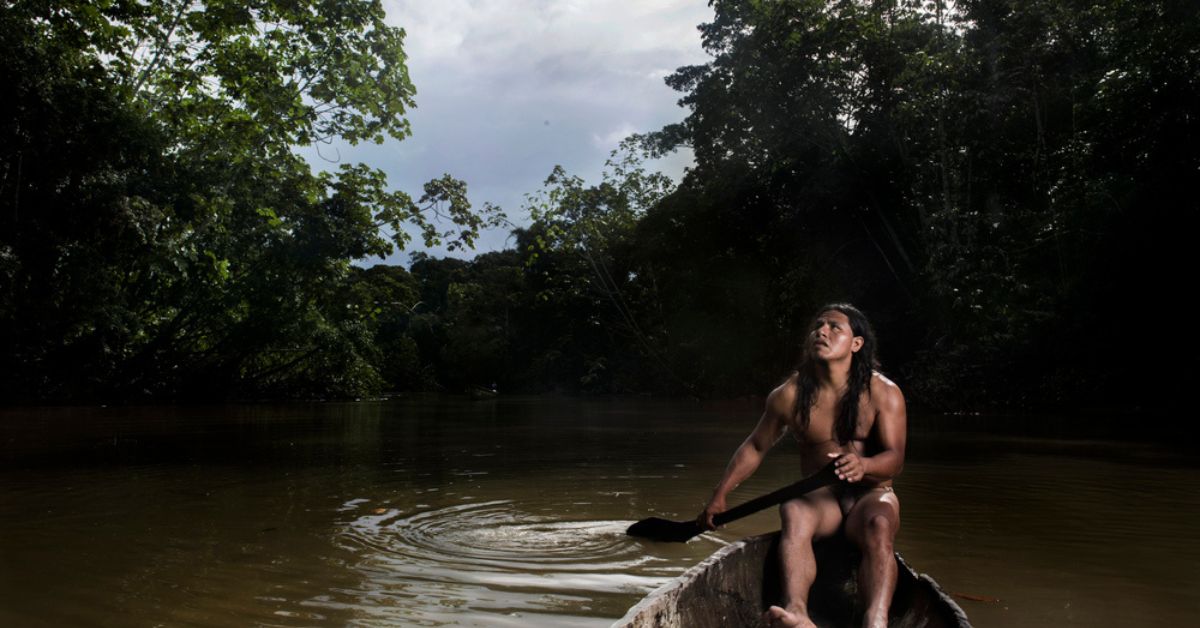

Edited by Padmashree Pande.
This story made me
-
97
-
121
-
89
-
167




